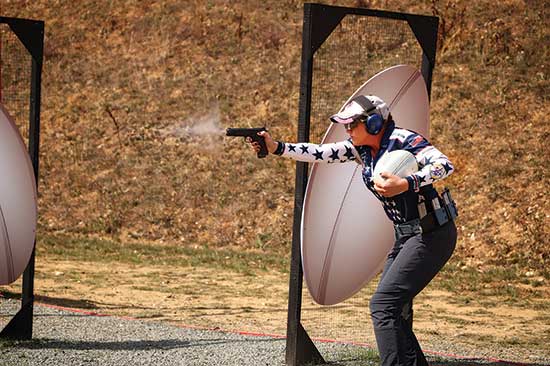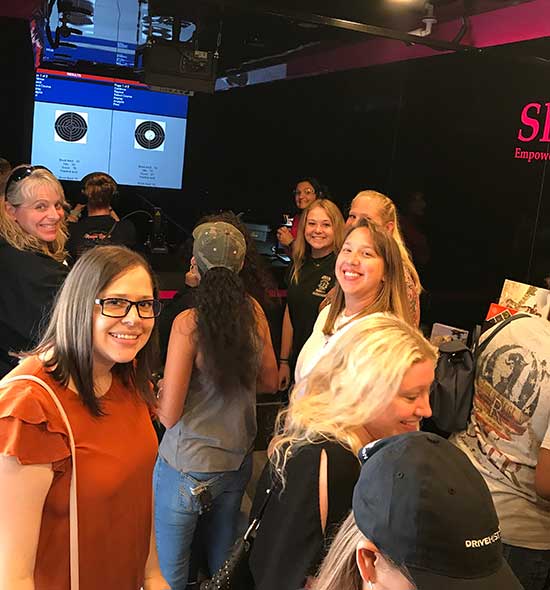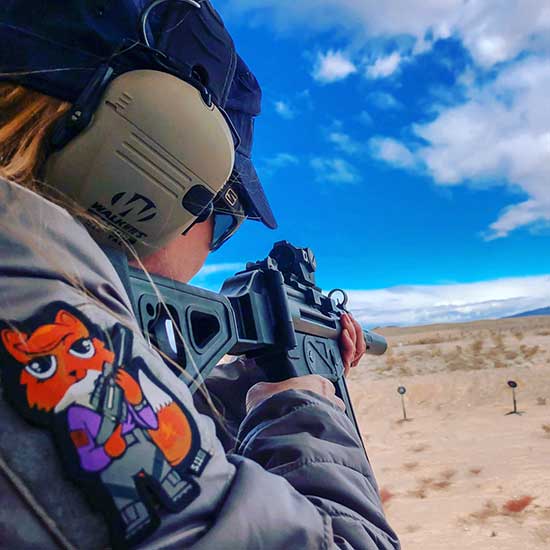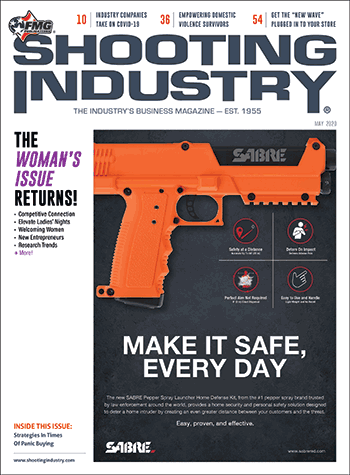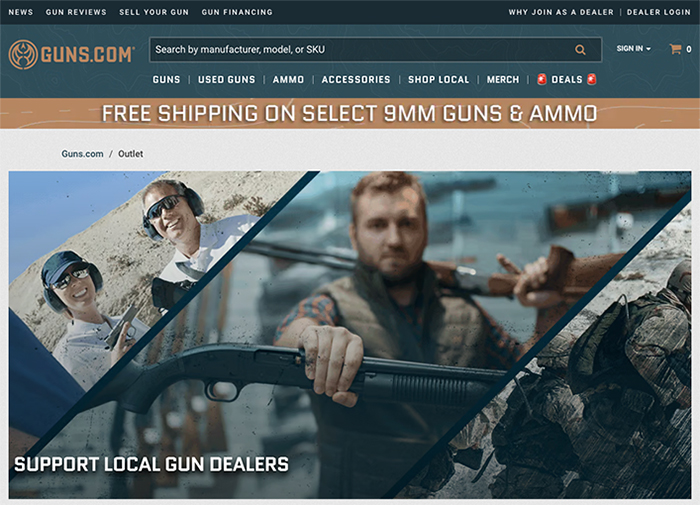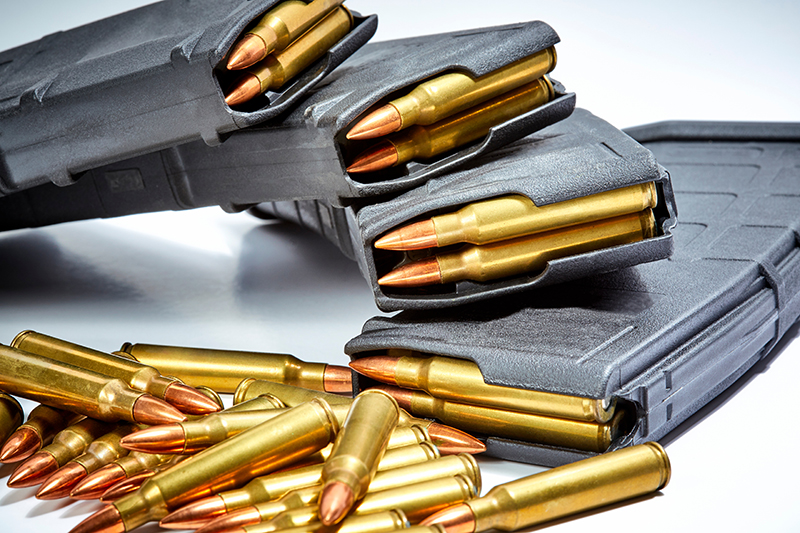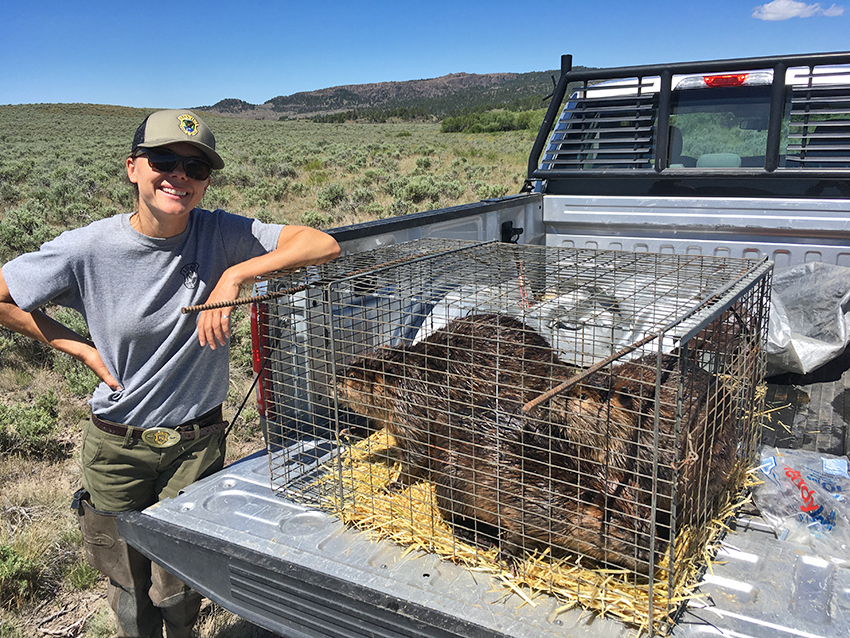2020 Vision: More Women Thriving Today
When the calendar year rolled over to 2020, many cleverly connected it to the idea of having 20/20 vision — not so much related to eyesight but more so in terms of having vision in business, marketing, leadership and other areas. And when it comes to recognizing the tremendous value women bring to the shooting industry, it’s fair to say we’ve all come a long way. Looking back, much has been accomplished. Looking around, most would say we’ve entered a new era. Looking ahead, there’s plenty of room for additional growth and advancement for women.
Today you’ll hear from some key women in the industry on what they’ve seen — their experience, how they’ve addressed challenges and, more importantly, the opportunities they see for women to continue making progress. Meet Sandi Little, president of Tactica Defense Fashion; Julie Golob, professional shooter and author; Shaylene Keiner, president of HeadHunters NW; Karen Butler, president/founder of Shoot Like a Girl and Debra Radcliff, 5.11 CMO.
As you look back on 2019, what successes for women in the shooting industry stand out to you?
Julie Golob: “In 2019, I think we really saw the rise of women owning their place in the industry. Women have been and continue to be a part of it as executives and directors in the manufacturing space, in mid-level management positions, business owners, trainers, influencers, shooters and gun owners. For years, the industry has talked about the women’s market as some sort of elusive prize. Even women in the industry have laid claim to their minority status as groundbreaking. The truth is, the proverbial ground has been tilled for decades. It may have started small but there are more women working in a variety of roles today than ever. What stood out to me is how 2019 brought a vibe of ownership, a sense of arrival.”
Sandi Little: “As we look back, there’s no denying the number of women who own guns are on the rise. We’re independent moms, sisters and daughters who are taking our safety into our own hands.”
Shaylene Keiner: “We’ve seen significantly more women who are setting a higher bar for professionalism. More professional women are seeing career paths in this industry. In 2019 and 2020, one of our client companies hired 30% women out of all positions we recruited for. One of these women went from a mid-level role to a strategic leadership role and became the go-to expert, reporting not only for the company nationally but also globally. In other words, her career has catapulted in the last year.”
Karen Butler: “Women continue to have the ability to help secure the future of our industry. Although we remain the fastest growing demographic, we still have so much opportunity to grow even larger. Last year the Shoot Like A Girl program increased in client participation by 73%, and half of our clients took another new shooter to the range with them!”
Debra Radcliff: “Traditionally, shooting was seen as a man’s world. However, women are now actively changing the face of the shooting industry. We’re proficient and skilled shooters, patient instructors, defenders of the Second Amendment, and we’re just as good as men. I’ve met so many amazing women shooters in the last year throughout my travels in the industry and it makes me proud of all we have accomplished and how far we’ve come.”
As you look to the present — the rest of 2020 and into 2021 — what’s next for women?
Karen Butler: “Today, I actually see our focus staying with women, but also including the bigger picture of families — inclusive to Mom, Dad, Grandma and Grandpa. The age of our clients shows shooting sports for women has an older demographic than our male counterparts. I see manufacturers continuing to develop products that are more form-fitting for women’s needs but maintaining function and performance. We also have 31% of the ladies who shoot with us also want to hunt; so I’m confident we’ll see more women hunting for their families.”
Julie Golob: “It’s important to keep the momentum going. We have so many great female leaders to look to as mentors and so many newcomers who provide freshness and inspiration. That combination is very powerful.”
Debra Radcliff: “The opportunity for women in the shooting industry has never been greater. Their position is growing and 5.11’s women’s business is growing with it. Opportunities are expanding for skilled shooters, general defenders of the Second Amendment and women completely new to the industry.”
Shaylene Keiner: “These are very exciting times for women. Our future is very bright and we will see more and more career opportunities develop. Today we see more women continuing to move up the corporate ladder and really making an impact, not simply filling seats. We’re seeing more women being considered for senior level roles. The truth of it is the industry is male dominated and I, for one, am completely okay with it — as long as we continue to evolve. Men and women are different. Ideally, we balance each other and together form a wonderful synergy. Women shouldn’t limit themselves to think there are no lessons to be learned from these wonderful men around us.”
“Remember, you’re not special just because
you’re a woman in the industry, you’re remarkable
because you have skills and value to offer.”
Julie Golob, Professional Shooter & Author
What Sre The Challenges Facing Women Today?
Debra Radcliff: “The shooting industry continues to be male-oriented and male-dominated. The biggest barrier to entry we face in bringing new women into our industry is a fear of the unknown. We rely heavily on the women currently within the industry to be inclusive and bring these new women into the fold. It’s our job to educate women on gun safety, personal and family protection, as well as Second Amendment protection.”
Shaylene Keiner: “I see two main challenges for women. First is board positions. Our industry would benefit greatly from more experienced executive women on our boards — both on for-profit and not-for-profit boards. When you add the right women to your board, you get a more balanced focus and therefore a higher success of meeting and exceeding expectations from shareholders. Secondly, we as women need to do more to uplift each other, support the successes of other women, be a mentor and look for a mentor. Our industry’s biggest challenge overall is communication. We work with our customers, one-on-one to increase productivity through better communication.”
Sandi Little: “Looking ahead, the challenge I see most is fear. I wish more ladies would get out to a range and try — just try to educate themselves on a firearm. Not only is it a lot of fun, it can save a life. Overcoming this challenge will only occur if we educate, educate, educate. It’s why I encourage women to share their experience with all the other women in their lives. Make a community, share it on date nights or ladies’ nights and encourage people you love to experience it and not fear it.”
Julie Golob: “Credibility is a major challenge. It’s a challenge for any individual or company in the industry. It cannot be faked. Just as any woman who shoots can tell when she’s being pandered to by a product that has been painted any sort of feminine color but lacks features and benefits, the same goes for those who work in and represent the industry, male or female. After credibility is competition. With more women, it’s harder to stand out and make your place.”
How Will The Aforementioned Challenges Be Overcome?
Julie Golob: “There’s a fine line between staying in your lane and opportunity growth. The consumer and social media have become the new watch dogs. For so many companies, creating products with features and benefits women (and men) can appreciate will be critical. For women as trainers, influencers and shooters, those who are able to stay true to their skills and experience but are open to learning can really thrive in this environment. Reality is relatable.”
Shaylene Keiner: “In addressing these challenges we need to understand these board roles and senior executive roles are available — however many times women are not aware of them. As such, women need to be assertive about their own networking, reaching into the executive levels if they wish to be considered serious contributors. All of the challenges can be overcome with being tenacious, using your time wisely and adding value. So my question for women: What are you doing today to increase your own value?”
Debra Radcliff: “Inclusiveness is the best way for bring more women into the industry, as well as empowering women currently in the industry. It’s our job to support each other, while we all work to support Second Amendment rights.”
How Should Women Approach These Opportunities?
Sandi Little: “For me, the biggest opportunity is in empowering women by helping them know they can protect themselves. This is what gives me drive and passion every day. The approach is ‘Do not fear, be open minded and experiment, learn and educate yourselves.’ To this end, I’m hoping to have more educational courses in different states where I can help women get more comfortable.”
Julie Golob: “I think the greatest opportunity for women in the coming years will be in marketing and media. Social media is tough to navigate for our industry but it doesn’t mean it can’t be used successfully. A challenge for brands will be continuing to market to the primary customer base (men), but also being able to communicate to women effectively. As a result there’s a huge opportunity for women in the media — from new media to traditional. Women with credibility, knowledge and skills and who are able to communicate have the greatest potential to capitalize on this.”
Shaylene Keiner: “There’s tremendous opportunity for our shooting sports industry as a whole — so many new products, new locations, new career roles and new doors opening each year for everyone, not just women. If women wish to seize these opportunities, I see more and more chances to do so. Again, women: Are you spending time with people who can hire you? Or, are you spending time with your peers? To be in the right place at the right time — you have to first be in the right place. Women can do this with a smile, zest for life and the wisdom to listen. With these women can solve the problems of their companies, employers and departments. Keep your antenna up, ladies! Every challenge is an opportunity for you to shine, no matter the day, month or year!”
What’s The Most Important Thing Women In The Industry Need To Keep In Mind Today?
Julie Golob: “The main difference here in 2020 and beyond is there’s more competition —more credible, capable women who can fill a variety of roles in the industry. Competition isn’t bad, but it does make things harder. Women need to keep in mind great opportunity exists in the industry at all levels. You’re the sum of your parts: Being competent, persistent and creative will help you showcase your talents. Remember, you’re not special just because you’re a woman in the industry, you’re remarkable because you have skills and value to offer.”
Shaylene Keiner: “Be inclusive of other women, set the example, mentor, lead and support others as they climb. Ladies — dress appropriately, act appropriately, speak appropriately. Earn the respect you want; don’t be afraid to ask the fine male leaders in our industry to mentor you, as well. We have the smartest, strongest women in this industry! So let’s be sure we are setting the bar high and help our industry companies be more profitable in 2020 and 2021 and beyond.”
Karen Butler: “From the professional development side, women in the industry need to be inclusive and respectful of each other and their male colleagues. I’ve found over the years our male counterparts are some of our biggest encouragers, and we can be a viable force to the industry — but it shouldn’t be at the expense of the men in the industry. We also have to be responsible. Equal rights comes with equal responsibility, and we must ensure we’re representing the industry in a positive way with integrity. We are the role models for the women of tomorrow — a big responsibility.” Debra Radcliff: “The most important thing women in our industry need to keep in mind today is protecting our Second Amendment rights. Of obvious importance is personal protection, safety, as well as being able to protect our families. But above all else, we need to focus on protecting the institutions that protects us and our right to bear arms.”

